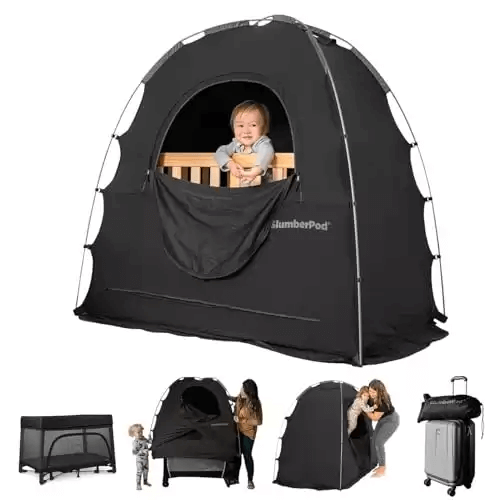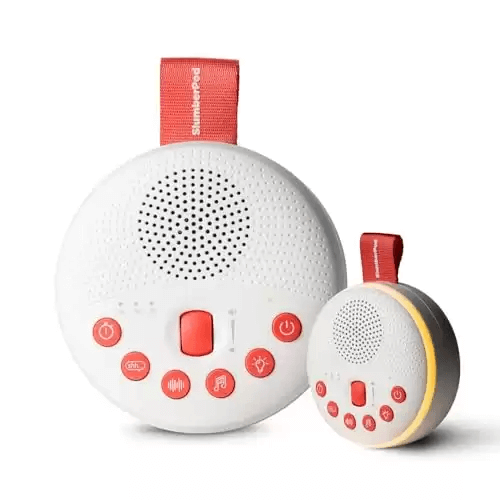
Discover the transformative power of consistency in sleep training, a simple yet game-changing approach that can turn chaotic nights into peaceful slumbers for both you and your little one. Imagine building a reliable routine that helps your child learn essential skills through repetition, fostering a sense of security that makes bedtime less of a battle. Yet, without sticking to the plan, you might face unexpected hurdles that prolong the process and leave everyone exhausted. Dive deeper into practical tips that reveal how this strategy not only accelerates progress but also empowers you to stay calm and confident amidst the challenges. Ultimately, embracing consistency could be the key to reclaiming your energy and enjoying more restful days ahead—don't miss out on these invaluable insights that have helped so many parents succeed.
Read more...
Navigating baby sleep schedules can often feel like walking a tightrope between rigidity and chaos, but there’s a liberating middle ground where flexibility thrives. By applying the 80/20 Rule, parents can focus on maintaining consistent sleep routines about 80% of the time while allowing for life’s unpredictability the remaining 20%. This balanced approach helps ensure that baby sleep schedules are not derailed by occasional deviations, offering parents a more stress-free environment to care for their children without striving for unattainable perfection.
The overwhelming abundance of information on baby sleep can create pressure to perfect sleep schedules from the outset. Influenced by societal expectations and social media portrayals, parents might feel compelled to have their baby sleep through the night within weeks. However, it’s crucial to remember that perfection isn’t necessary, and it’s okay to deviate from a strict routine now and then, as long as foundational sleep principles are respected. This mindset not only eases parental anxiety but also reinforces the understanding that occasional schedule disruptions don’t negate overall progress.
By focusing on key sleep pillars—like understanding age-appropriate wake windows, consistent bedtime routines, and creating an optimal sleep environment—parents can build robust sleep foundations for their babies. These pillars allow for occasional flexibility without compromising on overall sleep quality. The 80/20 Rule encourages parents to identify and prioritize core sleep elements consistently, providing the freedom to enjoy life’s unpredictable moments, such as family gatherings or special events, without feeling guilty or stressed about their baby’s sleep schedule.
Navigating the complex world of baby sleep schedules can often feel like walking a tightrope between rigid routines and complete chaos. For parents who strive to find balance without sacrificing their sanity, the 80/20 Rule offers a refreshing perspective. Discover the transformative power of this principle where consistency intertwines with flexibility, allowing you to maintain healthy sleep habits for your baby without the pressure to be perfect. Embrace the idea that prioritizing sleep 80% of the time means you can afford a little wiggle room the other 20%—because life is meant to be lived, not meticulously scheduled. Learn how to mesh foundational sleep habits with the unpredictable demands of family life, and ultimately enjoy a more relaxed and rewarding parenting journey. Dive into practical tips and comforting insights that could revolutionize not just your baby’s sleep, but your peace of mind, too.
Read more...
Springing forward for daylight savings can feel like a whirlwind, especially if you're a parent trying to navigate your child's sleep schedule. This post unveils a strategic and gradual approach to help sync your child's internal clock with the time change, all while minimizing the expected tears and tantrums. Discover the science behind why our little ones are so sensitive to this annual shift and gather actionable tips for using natural light, gradual schedule adjustments, and patience to smooth the transition. From babies' responsive routines to toddlers' newfound time concepts, this guide promises a plan that makes daylight saving time less of a groggy Monday and more of a managed shift. Dive deeper to ensure both you and your child emerge from this time change well-rested and ready to tackle those sunny spring days.
Read more...

This post is about 5 essential sleep tips for traveling with a baby. It contains affiliate links. Should you choose to make a purchase, I may make a small commission. Read more in my Privacy Policy.
Traveling with a baby can feel overwhelming. You might think it’s like packing for a small army. Let’s be honest, the biggest worry is often… SLEEP! Will they sleep? Will you sleep? Will anyone sleep?!
I’ve been there, and survived (mostly!) We traveled a lot when the kids were babies and toddlers. Today, I’m sharing my 5 essential sleep tips for traveling with baby.
Whether you’re jet-setting to a tropical paradise or simply visiting grandma, a little preparation goes a long way. So, let’s dive in!
Stick to the Routine (As Much As Possible!)
We all know babies thrive on routine. While completely replicating your home schedule is next to impossible, aiming for consistency is key. Try to maintain consistent nap and bedtime routines. They will shift slightly, but sticking as closely as possible will help.
When we traveled with the kids, we always went back to the hotel midday. We aimed to give them a nap at approximately the same time every day. This midday break not only kept the kids on their schedules, but gave us a chance to recharge as well. If you’ve ever traipsed around Disney World with four little kids, you know what I mean.
You’ve probably heard that sleep begets sleep. It’s true. By respecting our kids’ routines, they slept better at night, even in hotel rooms.
You may be familiar with the family who goes all day, without giving their babies and toddlers time to rest. You’ll recognize them because their kids are melting down at 5:00. The parents are melting down at 5:00. Nobody is having fun and it’s just a mess.
You can avoid this by allowing your kids to rest if they typically take a nap midday. Trust me on this. I have four kids and I very seldom had to navigate the 5:00 meltdown on vacation.
- Pro-tip: If you’re changing time zones, start adjusting your baby’s schedule a few days before your trip. Shift their wake-up, nap, and bedtime by 15-30 minutes each day to ease the transition.
Create a Familiar Sleep Environment

New places are exciting, but they can be overwhelming for little ones. Bringing familiar sleep items can help create a sense of comfort and security.
Pack their familiar sleep cues, like their favorite lovey, sound machine, or bedtime story. We always packed the kids’ favorite blankets, lovey, etc. We never let them leave the hotel. The worst day in your parenting life comes when your toddler loses her favorite lovey on a ride in Disney World.
To be clear, this did not happen to us. Why? Because the lovey never leaves the hotel. Trust me on this one. Read that again. The lovey never leaves the hotel (or Air BNB or wherever home base is).
Besides the comfort items, don’t forget to pack the other things that will help your baby sleep.
If your baby sleeps in a dark room, you’ll want to replicate that. While hotels have blackout curtains, Air BNBs may not.
My favorite workaround for a dark room is the Slumber Pod. It’s a great option for creating a dark area in a room. Others may share this space and not want to sit in darkness while the baby naps.
You can also pack a portable blackout shade. Hotel rooms and relatives’ guest rooms aren’t always ideal for sleep. Being able to darken the room can transform any space into a sleep-friendly environment.
Bring your child’s sound machine. White noise can mask unfamiliar sounds and create a soothing atmosphere. You can get a small, portable sound machine here.
Optimize Travel Time for Sleep

Consider your baby’s natural sleep patterns when planning your travel. If your baby typically naps well in the car, try to schedule long drives during nap times. If you’re flying, consider a red-eye flight if your baby tends to sleep well at night.
If you’re traveling by car, ensure their car seat is comfortable and secure. Pack their favorite toys and snacks to keep them entertained when they’re awake.
If you are traveling by plane, try to plan a feeding during takeoff and landing to help with ear pressure. A pacifier is helpful, too. Bring plenty of distractions and be prepared to walk the aisles if needed.
Understandably, people fly with their babies on their laps. I always bought a seat and took a car seat (or two) on the plane. I always felt it was safest in turbulence and it allowed my baby to nap on the plane safely. I highly recommend this if you can.
Be Flexible and Patient
Travel can disrupt even the most consistent sleep routines. Expect some bumps in the road and try to be flexible. If your baby’s nap is shorter than usual, or bedtime is a little later, don’t stress.
You might be off your routine. Following your baby’s sleepy cues can help. They can help you realize when the baby needs to sleep. You can learn more about understanding your baby’s sleepy cues HERE.
Sleep regressions can happen anytime, and travel can exacerbate them. Take a deep breath and remind yourself that it’s temporary. Sometimes, you just can’t stick to the routine and that’s ok. Focus on getting back on track the next day.
Prioritize Your Own Sleep (When Possible!)
Traveling with a baby is exhausting! Don’t forget to take care of yourself. If you’re traveling with a partner, take turns with nighttime wake-ups. If you’re traveling solo, don’t be afraid to ask for help from family or friends if they’re available.
Even small pockets of rest can make a big difference. If your baby is napping, take a moment to relax, read a book, or even take a quick nap yourself. When we’d go back to our hotel to nap the babies, I always took a nap myself. It’s a luxury I didn’t have at home.
On vacation, there is likely not laundry to fold, dinner to prep, or dishes to wash. So if your baby is napping, you should grab a snooze, too! You’ll be glad you did.
Traveling with a baby doesn’t have to be a sleep disaster. Keep these 5 essential sleep tips for traveling with a baby in mind when you’re planning a trip.
With a little planning and flexibility, you can help your little one (and yourself!) get the rest you need. Remember, every baby is different, so find what works best for you and your family.
You’ll also like: Balancing the Mental Load of Motherhood

This post is a guide for new parents about how to identify a baby's sleepy cues. It includes yawning, rubbing eyes, pulling ears, crying and jerking movements. This post includes suggestions of what to do when your baby is sleepy.
Unlock the secrets to better sleep for both you and your baby by mastering the art of recognizing their sleepy cues. From subtle signs like yawning and rubbing eyes to more evident behaviors such as fussiness and comfort-seeking movements, understanding what your baby is communicating can profoundly impact their rest. This insightful guide reveals how to interpret these cues and offers practical strategies to create a serene sleeping environment, establish a soothing bedtime routine, and ensure your baby drifts off peacefully. Don't let exhaustion take over your parenting joy; dive into this essential resource to help your little one—and yourself—achieve restful nights and refreshing days. Discover the power of timely responses and see how sensitivity to your baby's needs can transform sleep challenges into restful victories.
Read more...










